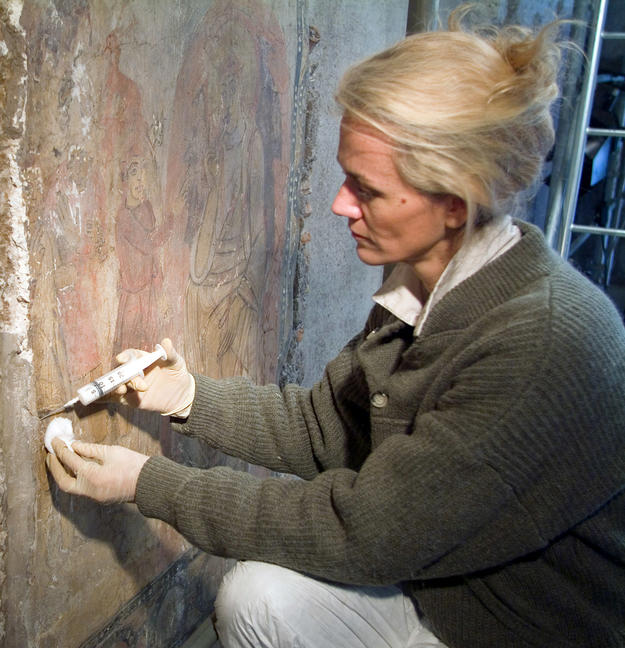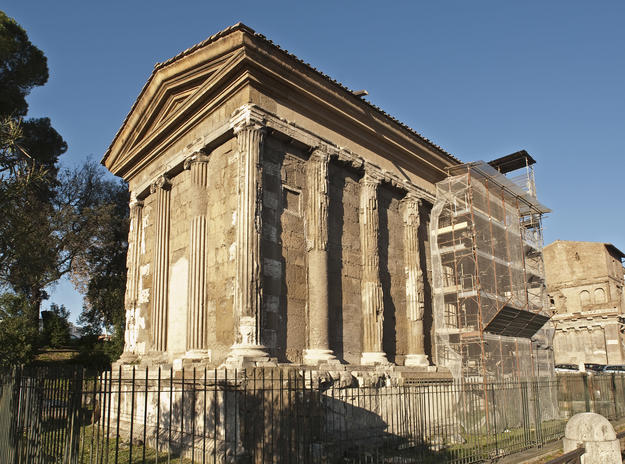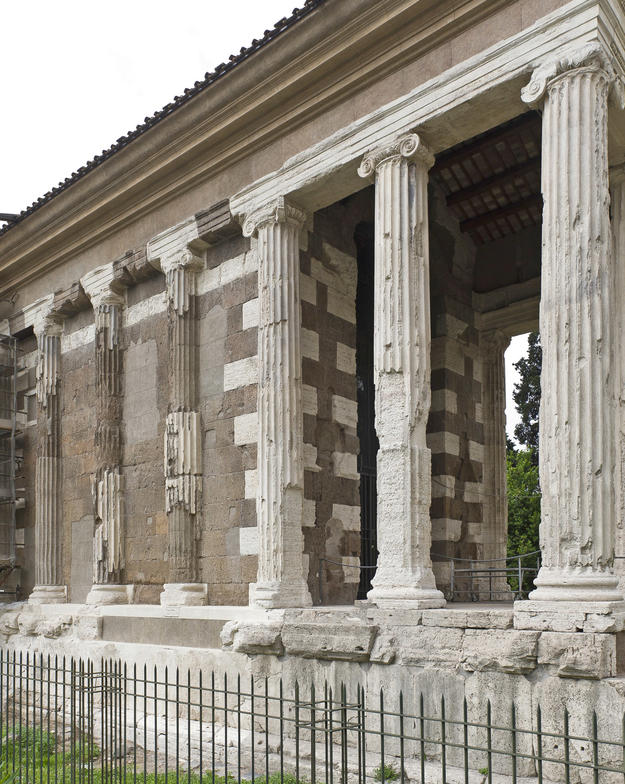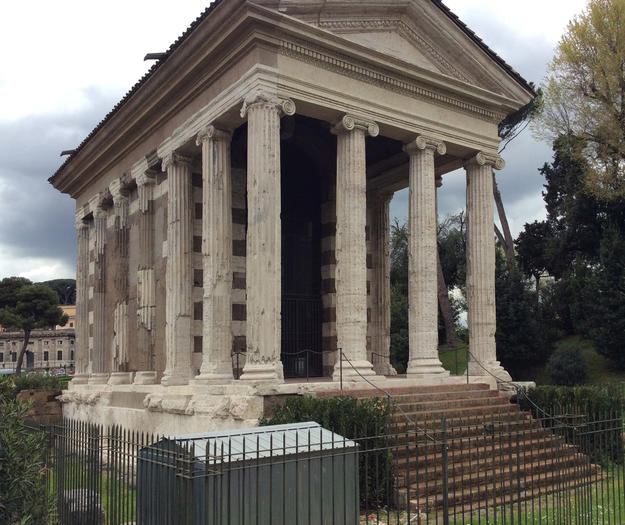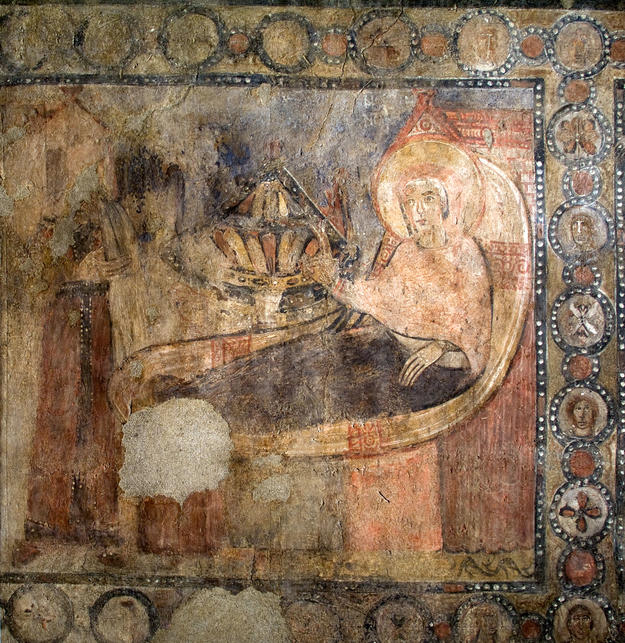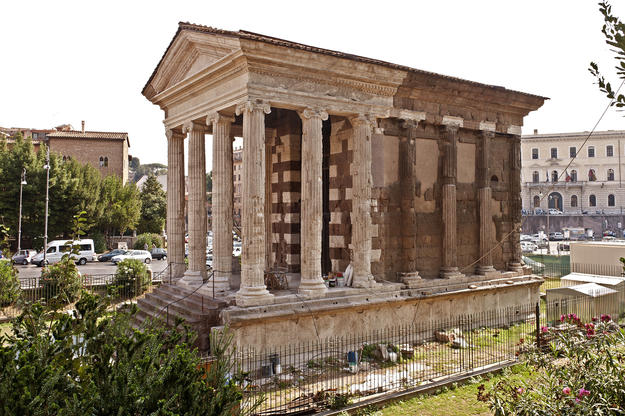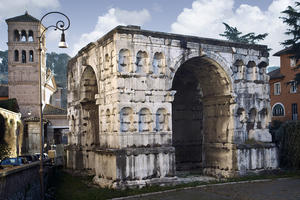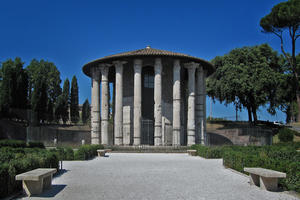Temple of Portunus
The Temple of Portunus, dating to the first century B.C., is a rare survivor of Roman Republican architecture and a reminder of the former magnificence of the Forum Boarium, a major commercial area along the banks of the Tiber in antiquity. The temple was dedicated to Portunus, a youthful god associated with water crossings and seaports. The rectangular building rests on a high podium with a single flight of steps leading to a pronaos, or portico, and a single cella. The combination of this typical Etruscan ground plan and the temple’s Greek Ionic columns is characteristic of Roman Republican period architecture. The structure was built out of travertine and tuff, originally plastered to imitate Greek marble. The frieze is decorated with garlands, putti, candelabra, and the popular ancient bucranium or ox-skull motif. The building was converted into a Christian church in the ninth century, when the interior of the cella was decorated with a fine cycle of frescoes depicting scenes from the life of Mary. This undoubtedly saved it from being pulled apart for building materials. In the 1920s the temple was freed of additions that had been added over time, and some conservation measures were taken to protect the structure.
Ancient history preserved in a rare Roman Republican temple
Local authorities carried out an assessment of the building in 2000. The temple was included on the 2006 World Monuments Watch, and in that year we collaborated with the Soprintendenza Archeologica di Roma to initiate its complete restoration. From 2006 to 2008 the four interior walls of the temple and their medieval frescos were completely restored, including detached fragments of the artwork. During the same period of time a new door was installed at the entrance to the cella and a new wooden roof was constructed, incorporating ancient roof tiles and carefully designed drainage. Starting in 2008, the front pediment on the north side of the temple was cleaned and restored. Between May and October 2010 the two central columns of the front façade were conserved, and work began on the rest of the columns along with the external walls in December of the same year. This phase of the project included biocide treatments, cleaning, and the replacement of old iron wall clamps and beams with stainless steel reinforcements. The east wall was restored between March 2011 and the spring of 2012, and the south wall was completed in 2013. Conservation of the west wall is expected to be finished in September 2016.
Studied and admired since the Renaissance, the Temple of Portunus has been used to illustrate many treatises on classical architecture. Today it continues to be an educational resource for those interested in the Forum Boarium and the other structures and areas in Rome that once formed part of this ancient commercial center.
World Monuments Fund's work at the Temple of Portunus has been made possible, in part, by support from The Robert W. Wilson Charitable Trust, American Express, and The Selz Foundation.

